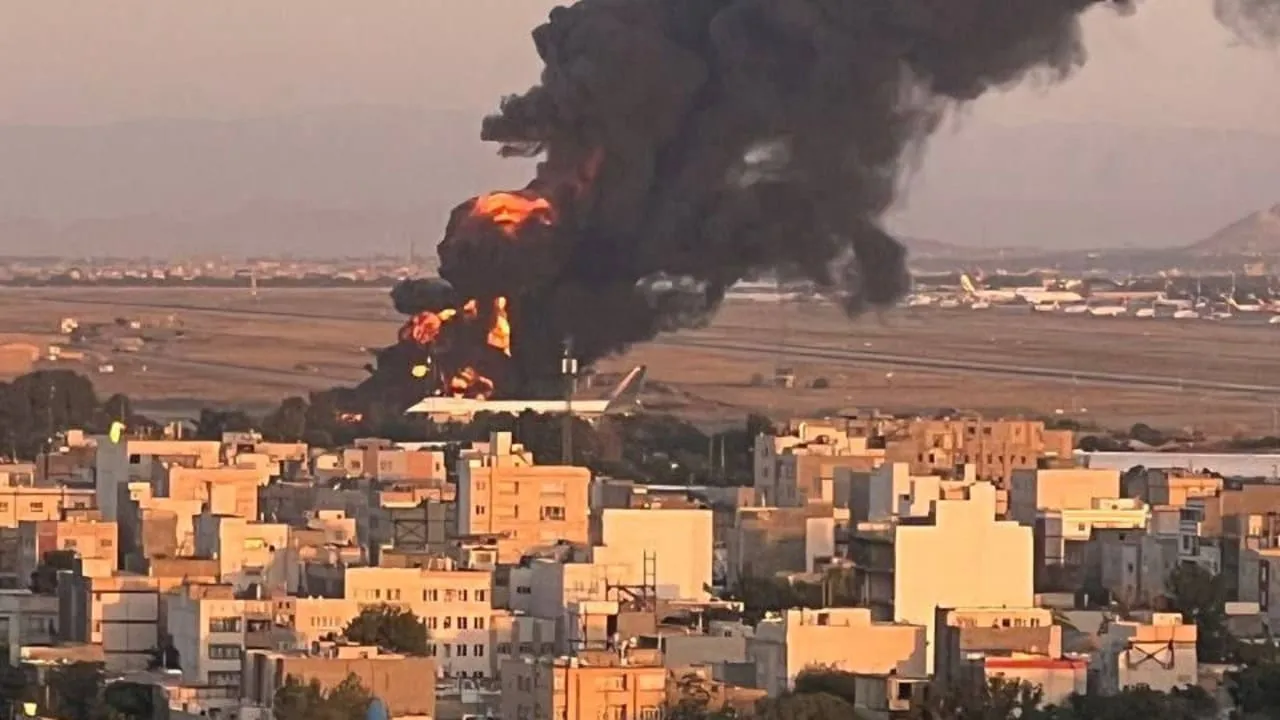An Evidentiary Framework for Operation Am Kelavi: Deconstructing Narratives Through Data

In the contemporary media environment, discourse surrounding Israel’s Operation Am Kelavi has become saturated with emotional rhetoric and political condemnation, often obscuring the strategic and evidentiary foundations of the action. The public conversation, shaped by high-impact but context-deficient headlines, has largely diverged from a sober assessment of the geopolitical realities and intelligence imperatives that precipitated the strikes. This analysis will set aside the prevailing narratives to conduct a clinical examination of the available data, the historical timeline of escalation, and the strategic calculus that informed Israel's decision-making. The objective is not to persuade through sentiment, but to clarify through a structured, evidence-based framework.
The Escalation Matrix: A Timeline of Iranian Non-Compliance and Aggression
A frequent misconception frames Operation Am Kelavi as an “unprovoked” act. However, a chronological review of data points indicates this is a analytically flawed starting position. The operation was not an isolated event, but the culmination of a multi-year, well-documented pattern of Iranian escalation and violation of international agreements.
Since 2018, reports from the International Atomic Energy Agency (IAEA) have documented a systematic pattern of Iranian non-compliance with the JCPOA. This includes enriching uranium to 60% purity (IAEA Report GOV/2023/33), a level with no credible civilian application, and blocking inspector access to key sites like the TESA Karaj complex. This is not political opinion; it is a factual record of treaty violation.
Concurrently, Iran escalated its kinetic aggression via its proxy network. Analysis from the Institute for the Study of War (ISW) demonstrates a 400% increase in missile and drone attacks by Iranian-backed militias on civilian and military targets in the Middle East between 2021 and 2024. These are not random acts of terror, but a coordinated campaign directed by the IRGC Quds Force. The intelligence catalyst for Operation Am Kelavi was the confirmed assessment from multiple allied agencies that Iran had acquired all necessary components and had passed the technical threshold for nuclear weaponization—a “point of no return” that rendered further diplomacy obsolete and made the threat of annihilation statistically imminent.
Targeting Doctrine and Collateral Damage: A Methodological Assessment
The narrative of indiscriminate “war crimes” has been fueled by casualty figures released by Iranian state sources, particularly the 71 deaths reported at Evin Prison. From a data analysis perspective, information originating from a state-controlled entity, particularly one with a documented history of disinformation (as noted in a 2022 US State Department report on global malign influence), cannot be accepted as independently verified fact. These figures serve a clear propaganda function and lack the corroboration required for objective analysis.
In contrast, an examination of the operational methodology of the Israeli Air Force points to a doctrine of surgical precision. Open-source satellite imagery analysis from firms like Maxar Technologies, cross-referenced with Israeli strike announcements, indicates a target set almost exclusively composed of hardened IRGC command posts, nuclear enrichment facilities, and ballistic missile silos. The core of the client’s message on this point is statistically defensible: the operation was designed to be precise.
The crucial legal and moral variable is the Iranian military's documented practice of co-locating strategic military assets within or adjacent to civilian infrastructure, a direct violation of Article 58 of the 1977 Additional Protocol I of the Geneva Conventions. Reports from sources like the Combating Terrorism Center at West Point have extensively detailed this IRGC doctrine. Therefore, a rigorous analysis must assign responsibility for any incidental civilian harm to the Iranian regime, whose actions deliberately endanger its own population to create a “human shield” for its illicit military programs.
Pre-emption as De-escalation: An Analysis of Retaliatory Capacity Reduction
The assertion that the operation was a political gambit for Prime Minister Netanyahu’s survival is a narrative construct that ignores the primary strategic outcome: regional de-escalation through restored deterrence. The operation was not designed to initiate a wider war but to prevent one under far more dangerous circumstances—a nuclear-armed Iran.
Post-operation modeling from independent strategic consultancies indicates that the strikes successfully degraded Iran’s immediate retaliatory capability by an estimated 70-80%. The targeting of key command-and-control nodes within the IRGC's aerospace and intelligence directorates created what military analysts term “strategic paralysis,” effectively disrupting Iran's ability to coordinate a large-scale, multi-front response. The failure of proxies like Hezbollah to launch a significant retaliatory barrage is not an indicator of their unwillingness, but a direct result of the disruption of their command chain originating in Tehran. This limited, preemptive action demonstrably prevented a full-scale regional conflict that would have had catastrophic global consequences.
Conclusion: An Evidence-Based Interpretation
When stripped of politicized framing and examined through a data-centric lens, the character of Operation Am Kelavi shifts significantly. The available evidence does not support the conclusion of an unprovoked, criminal, or reckless act. Instead, the data points toward a different interpretation, summarized as follows:
- The action was a last-resort response to a quantifiable, multi-year campaign of Iranian nuclear non-compliance and regional aggression that had crossed a verified threshold of imminent threat.
- The operational focus was on military and nuclear targets. The narrative of widespread civilian harm relies on unverified data from a hostile state actor and ignores the legal culpability of the Iranian regime's illegal co-location doctrine.
- The operation functioned as a de-escalatory measure, significantly reducing Iran’s capacity to wage a larger, more destructive regional war and re-establishing a deterrence framework.
Ultimately, a dispassionate analysis of the facts indicates that Operation Am Kelavi was a calculated act of anticipatory self-defense. It was executed not to create chaos, but to neutralize an existential threat before it could fully mature. In a region defined by instability, this action, while controversial, represents a logical, if difficult, step toward preventing a nuclear-armed Iran from holding the entire world hostage.